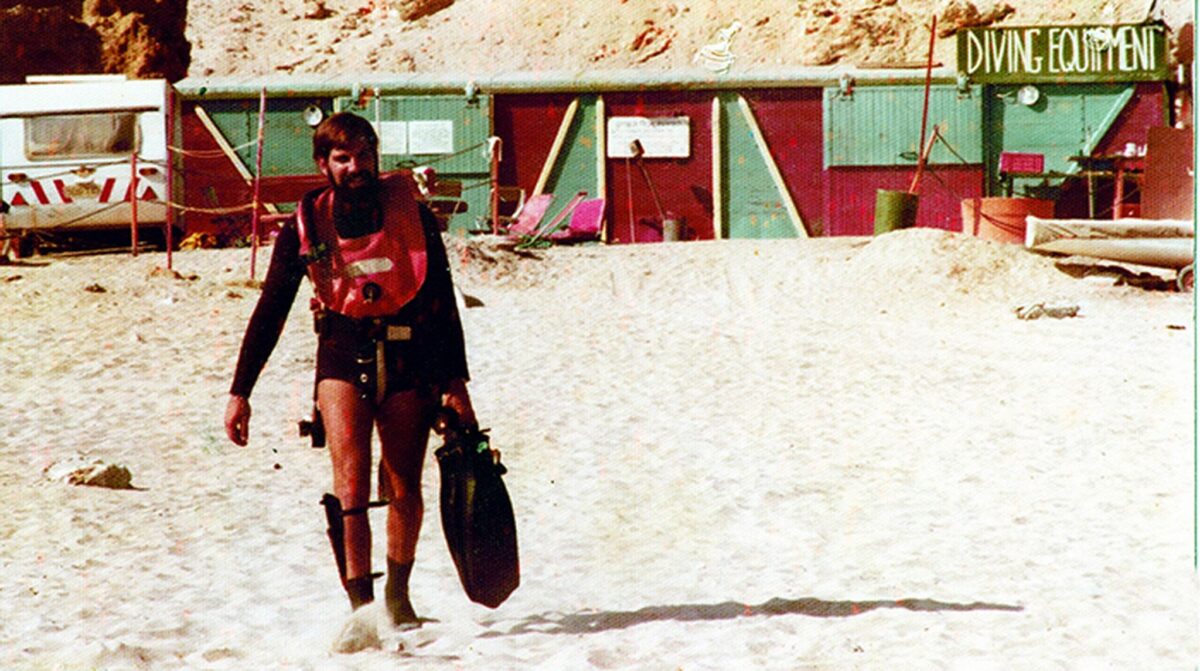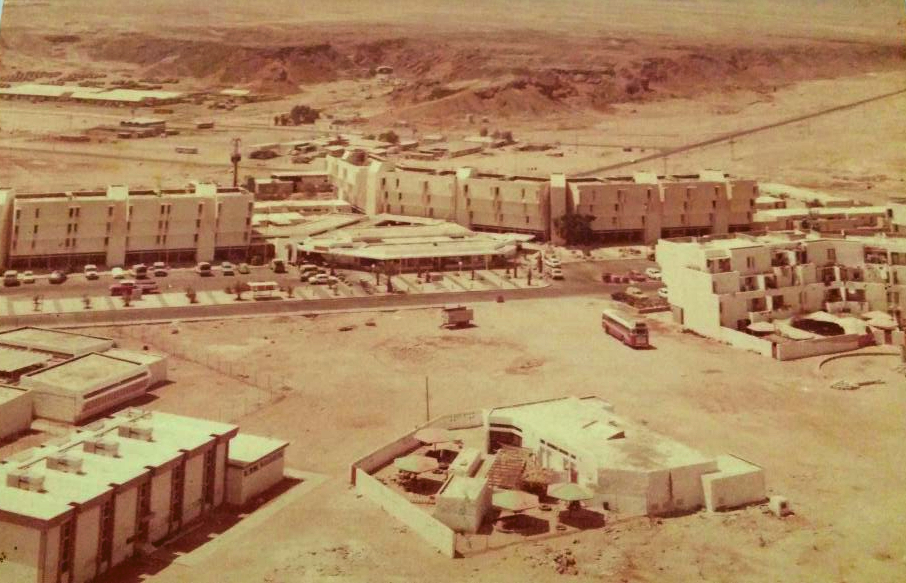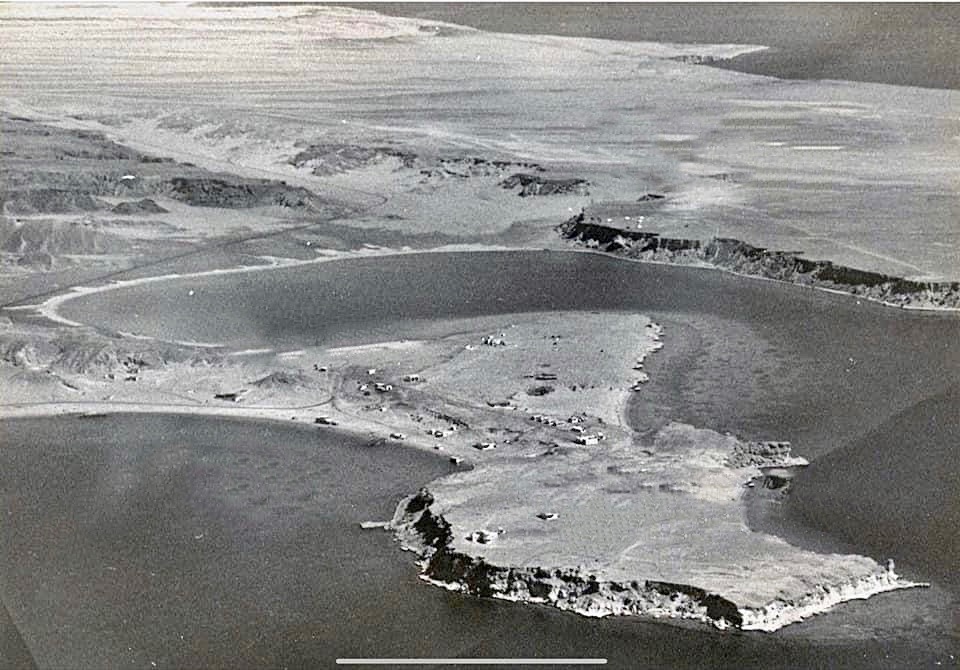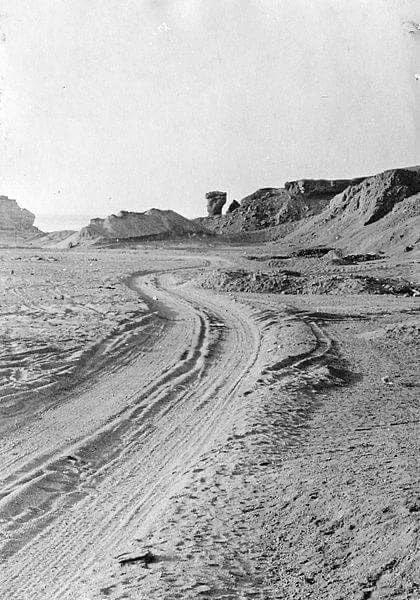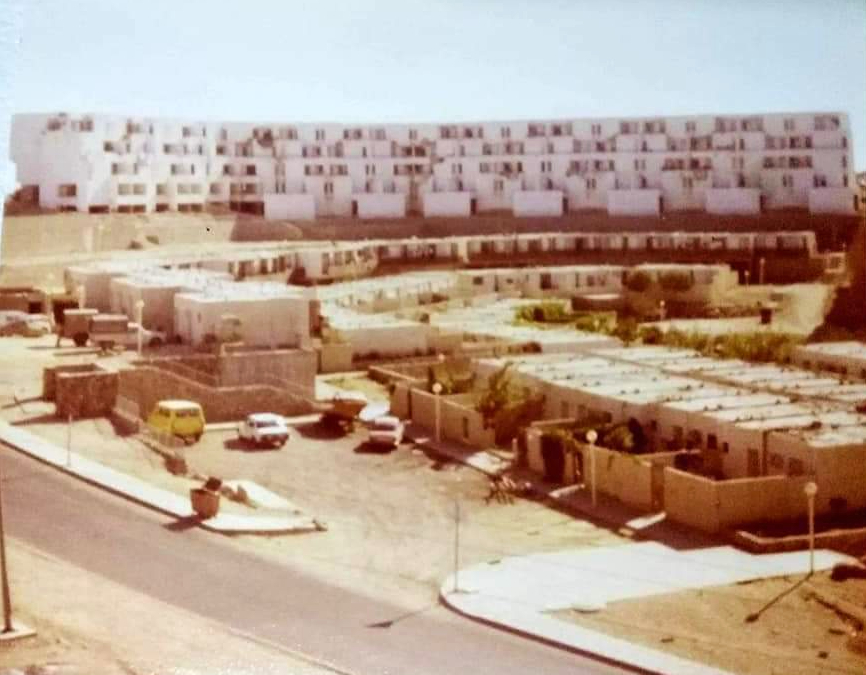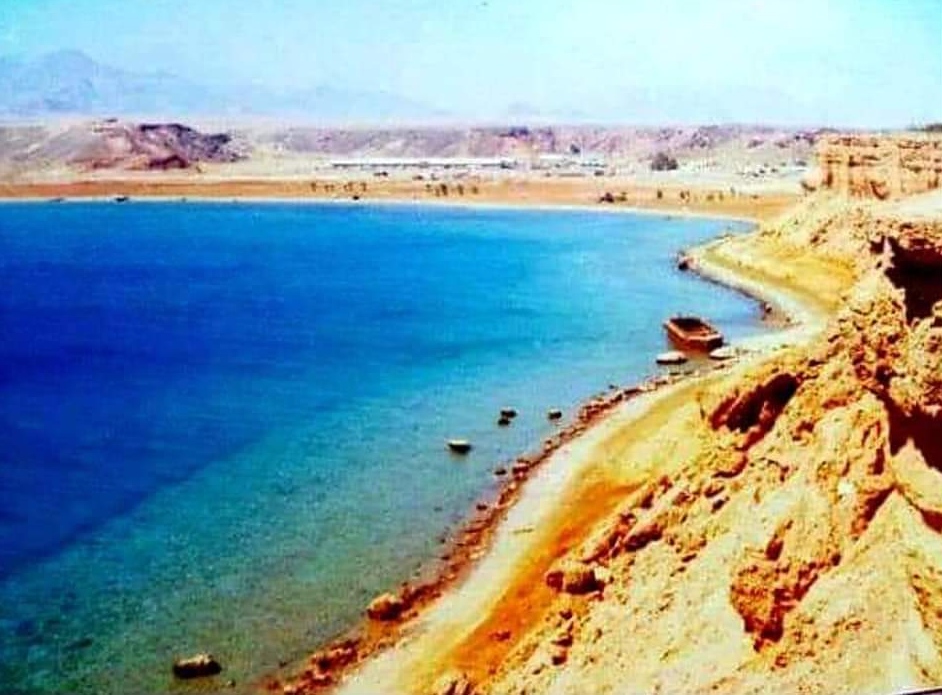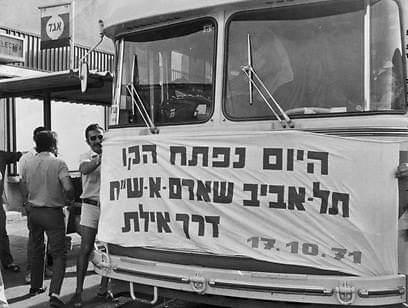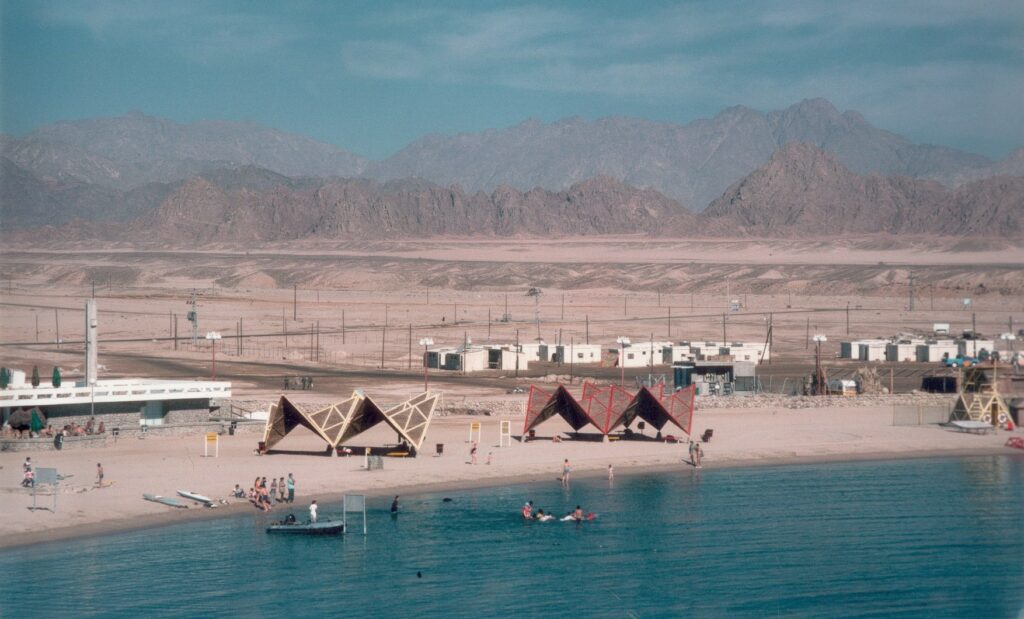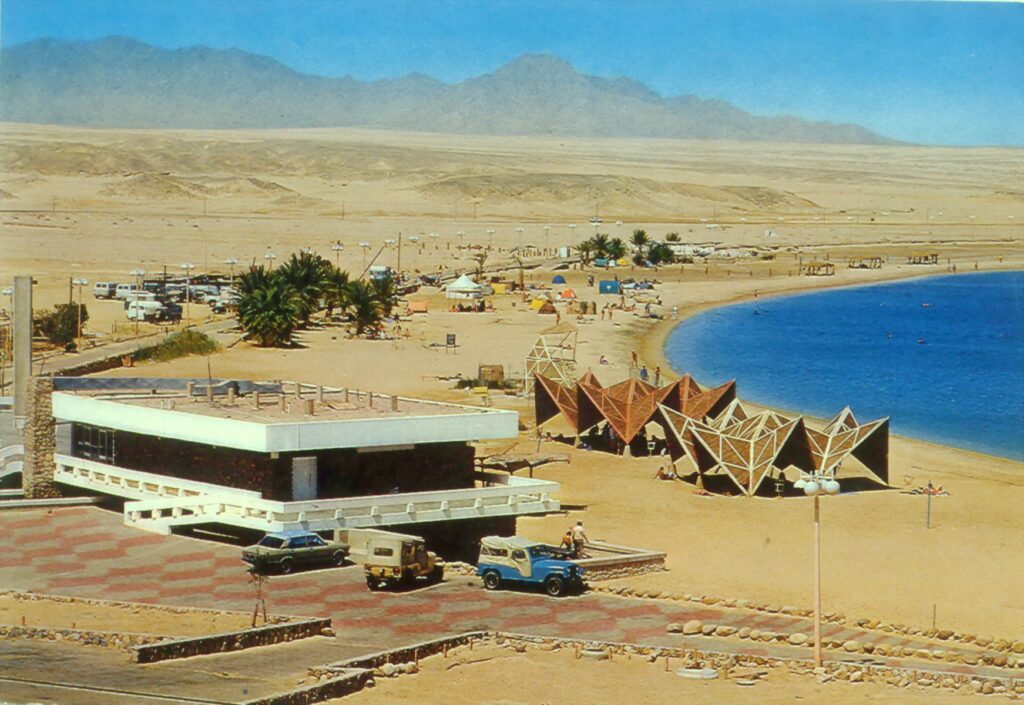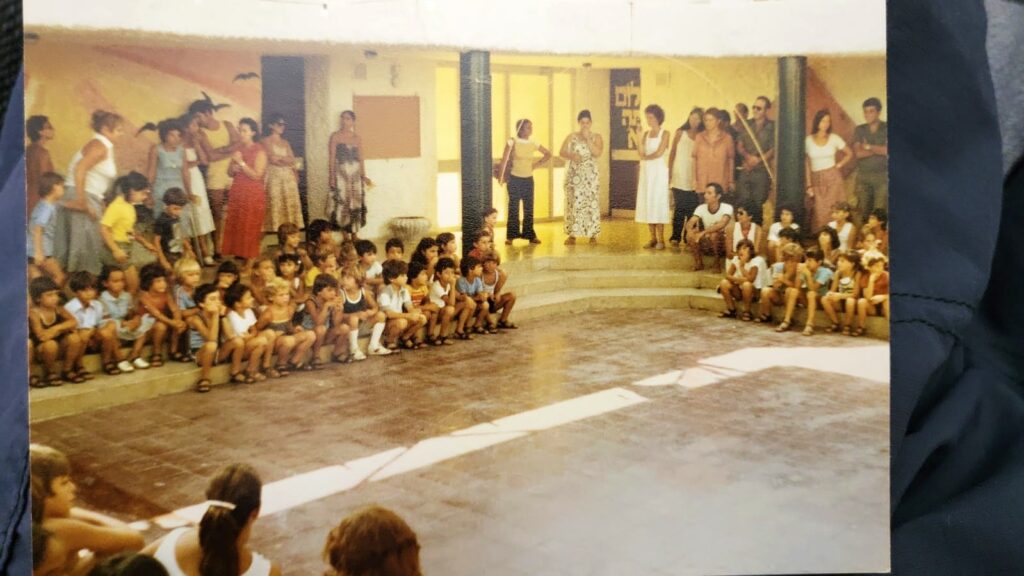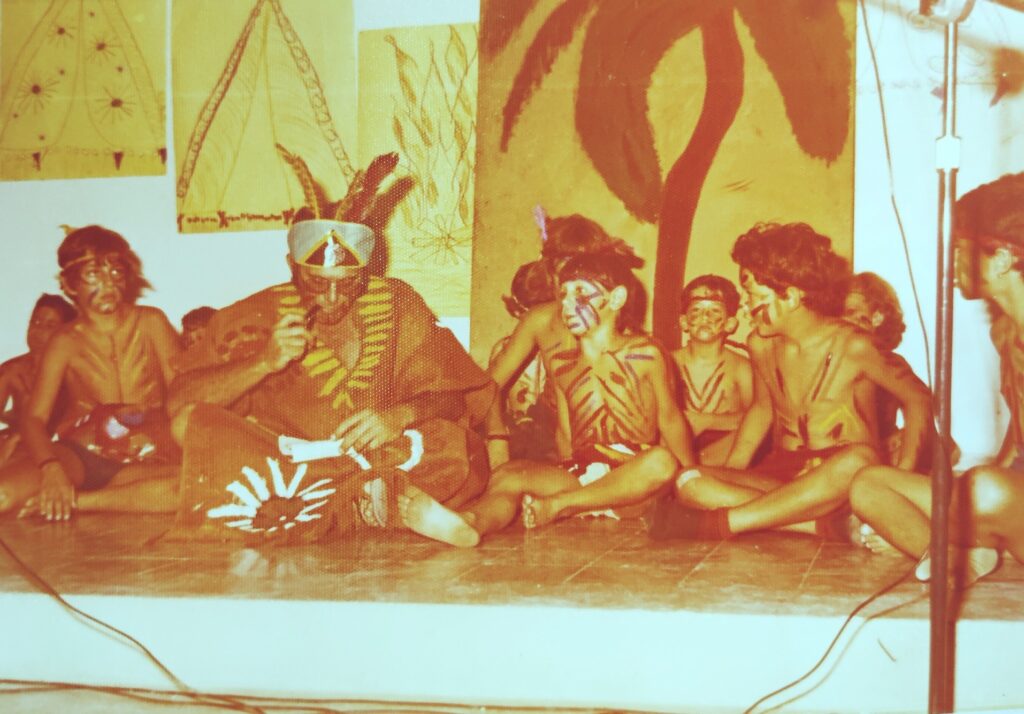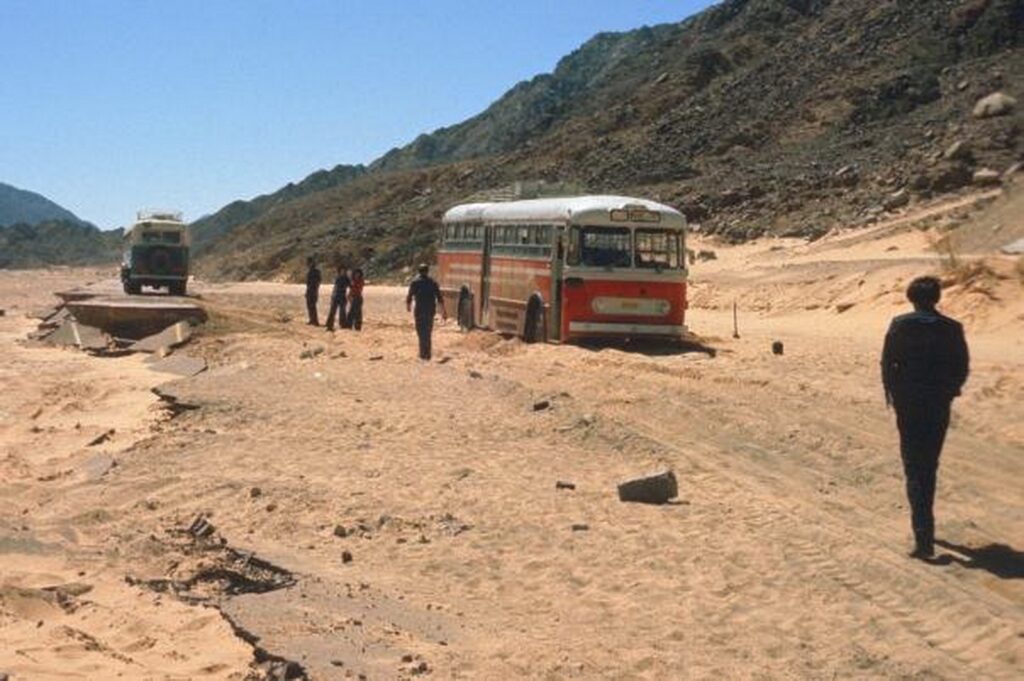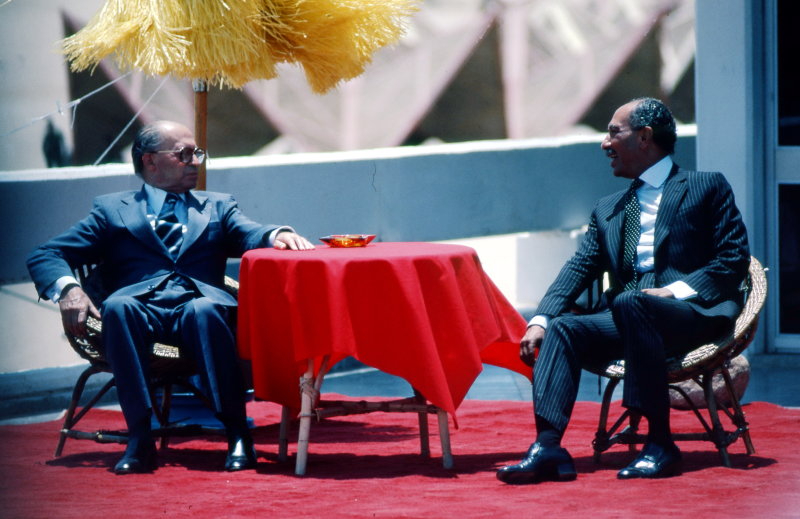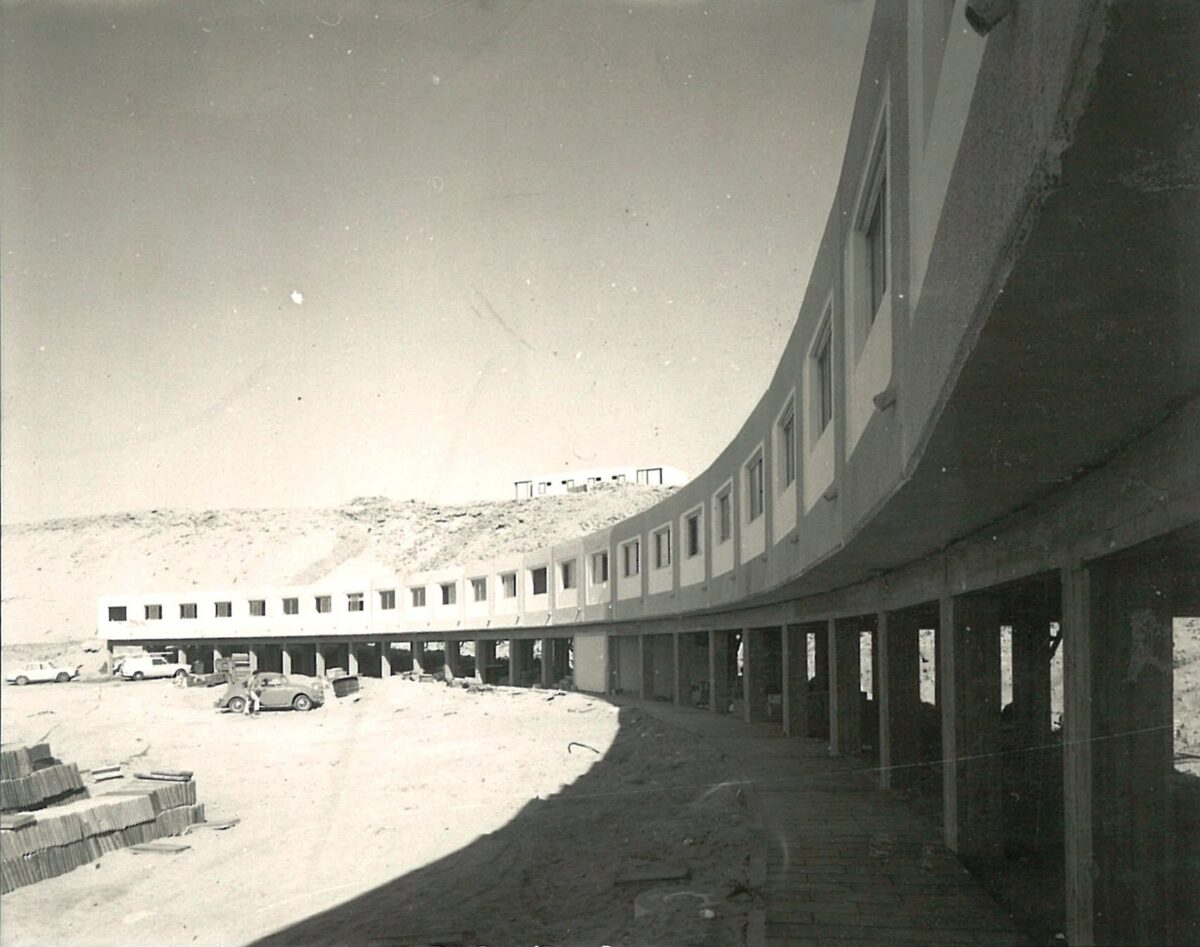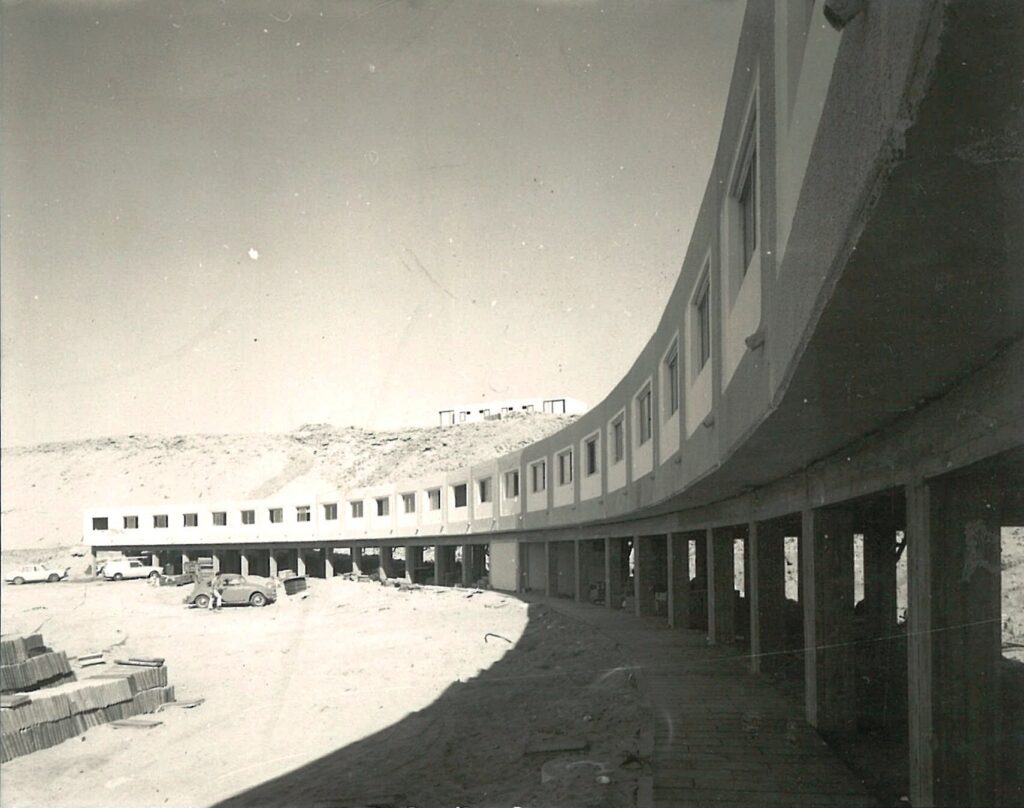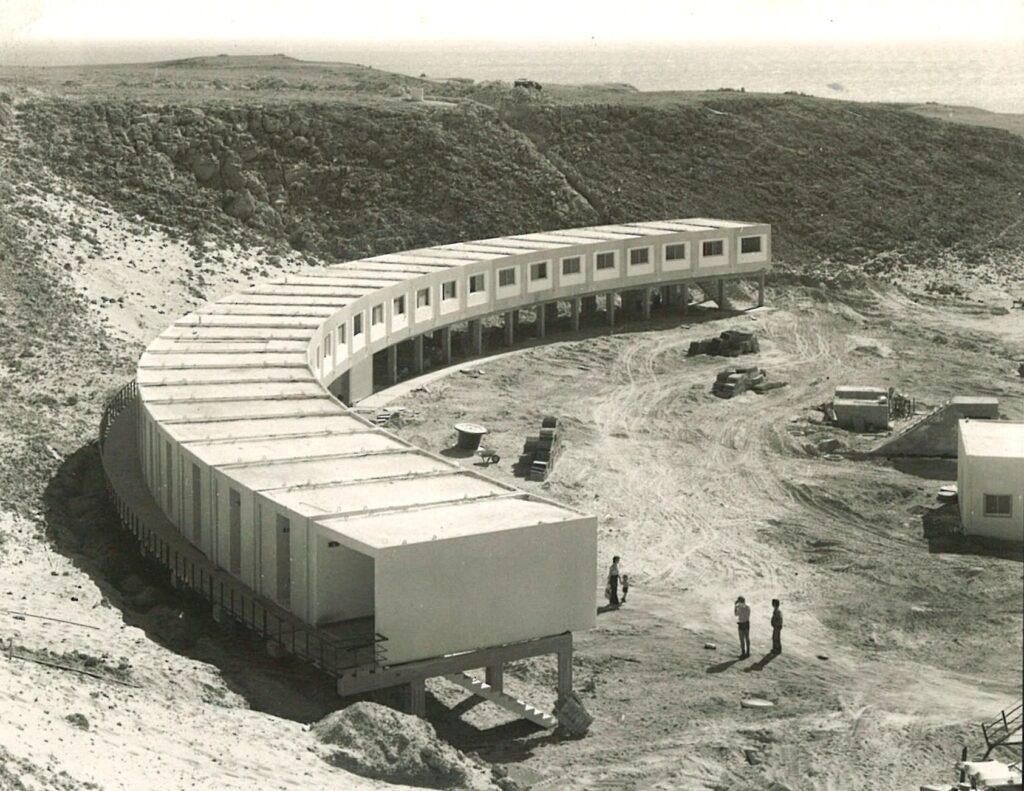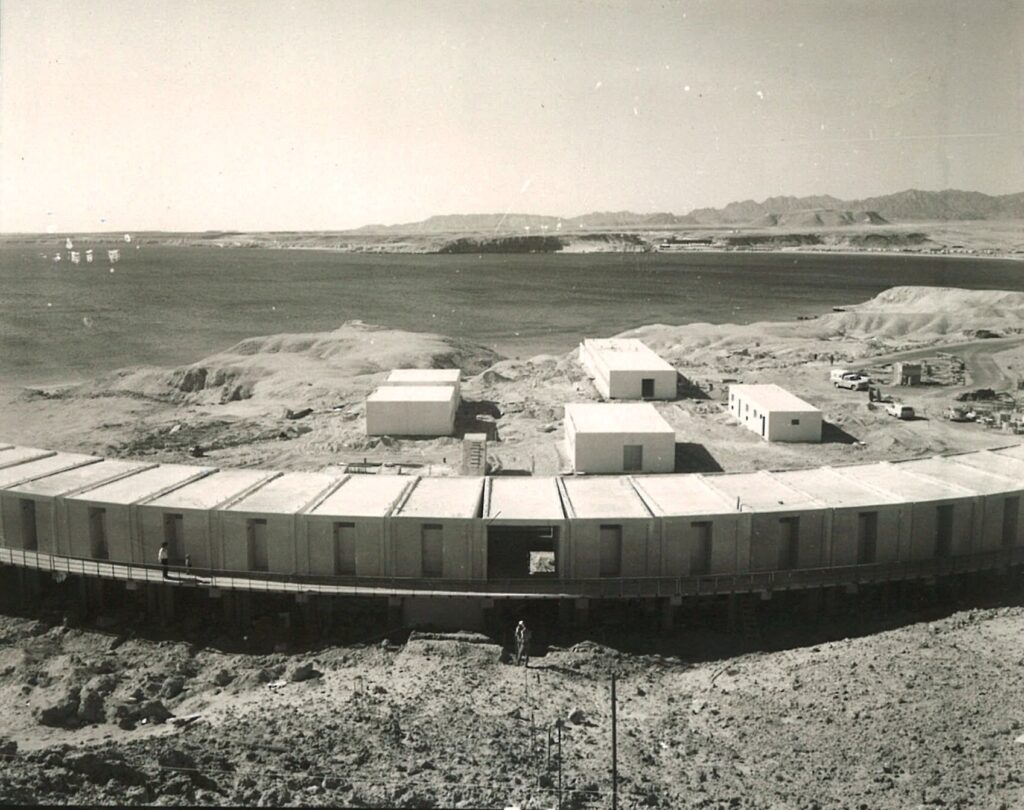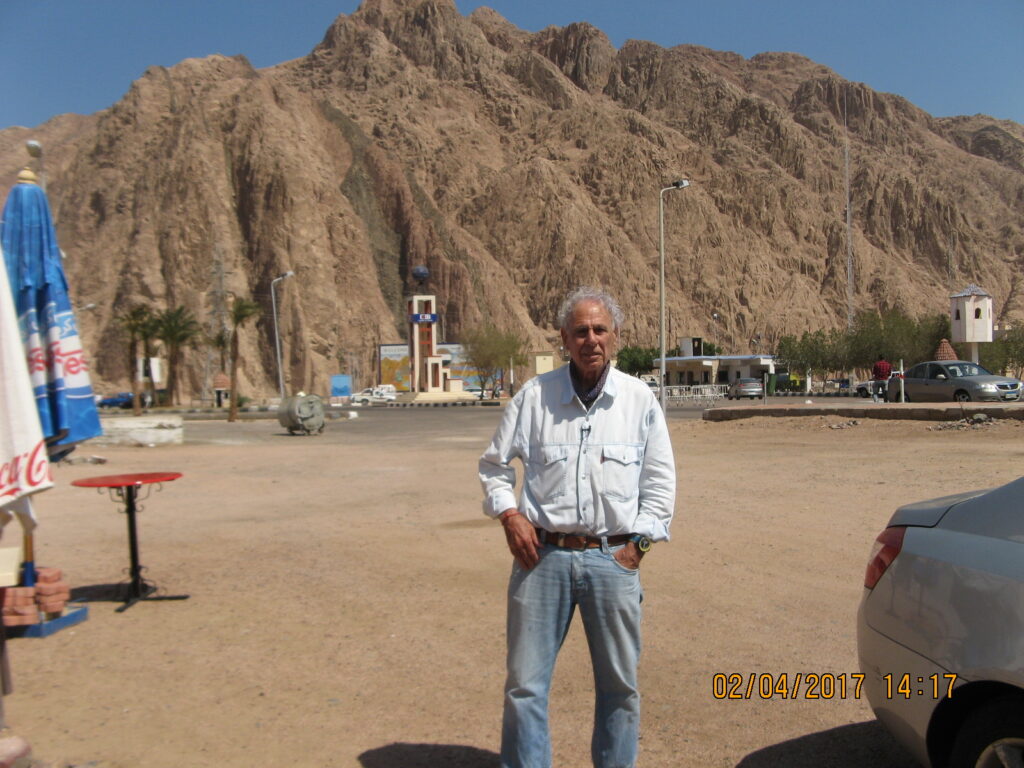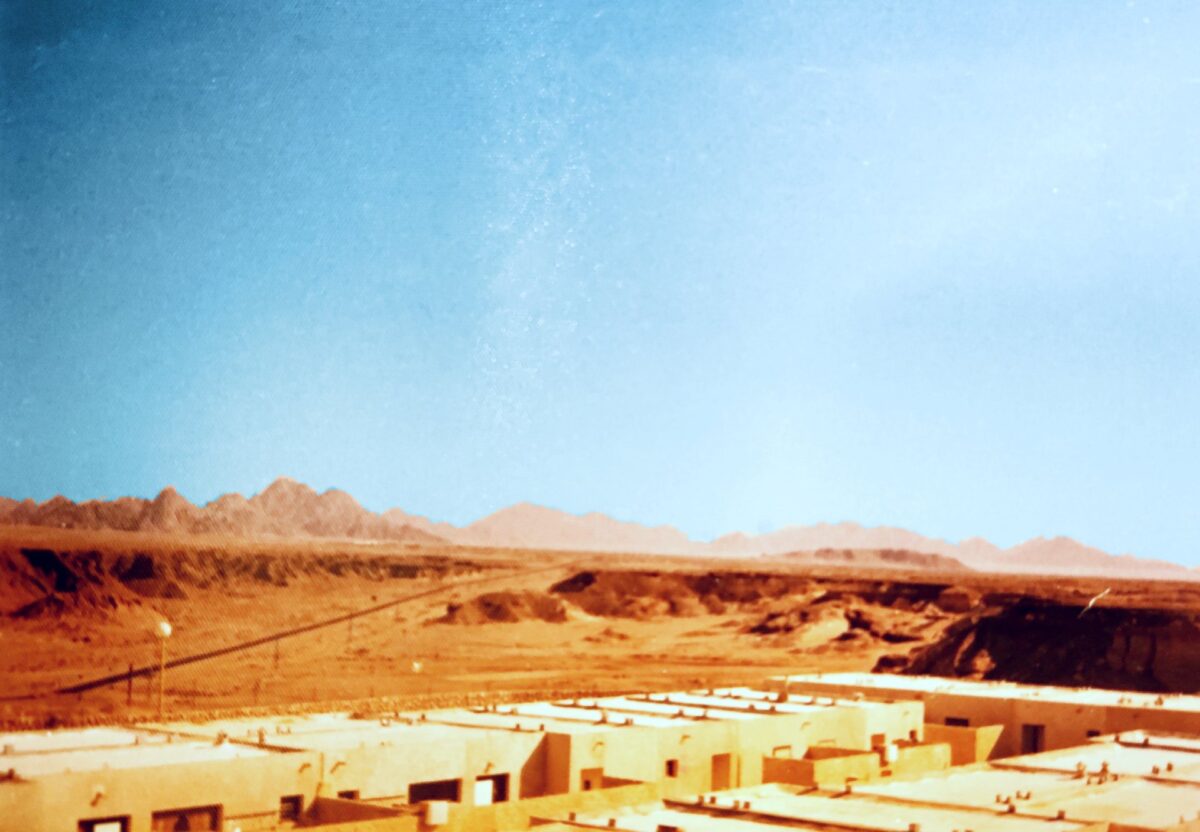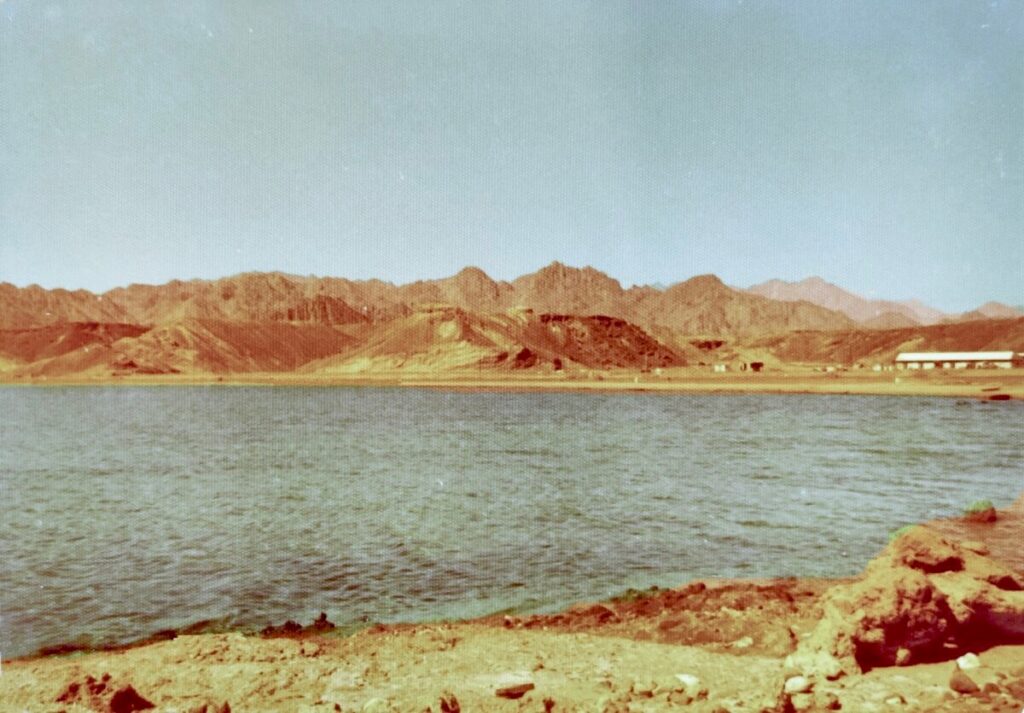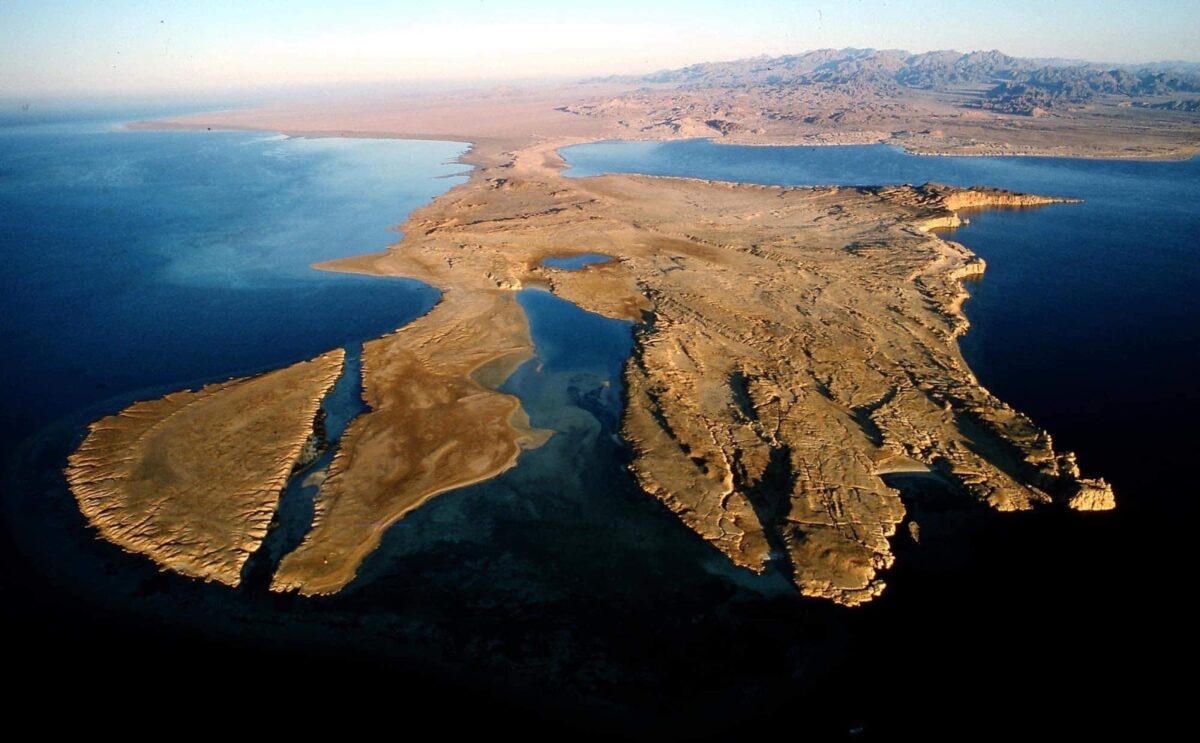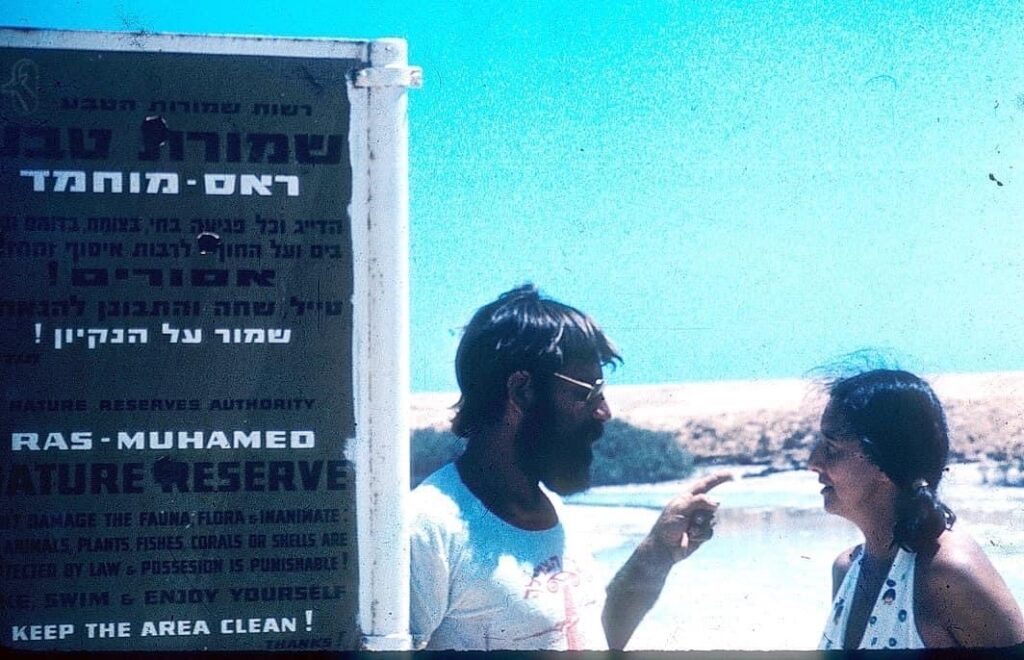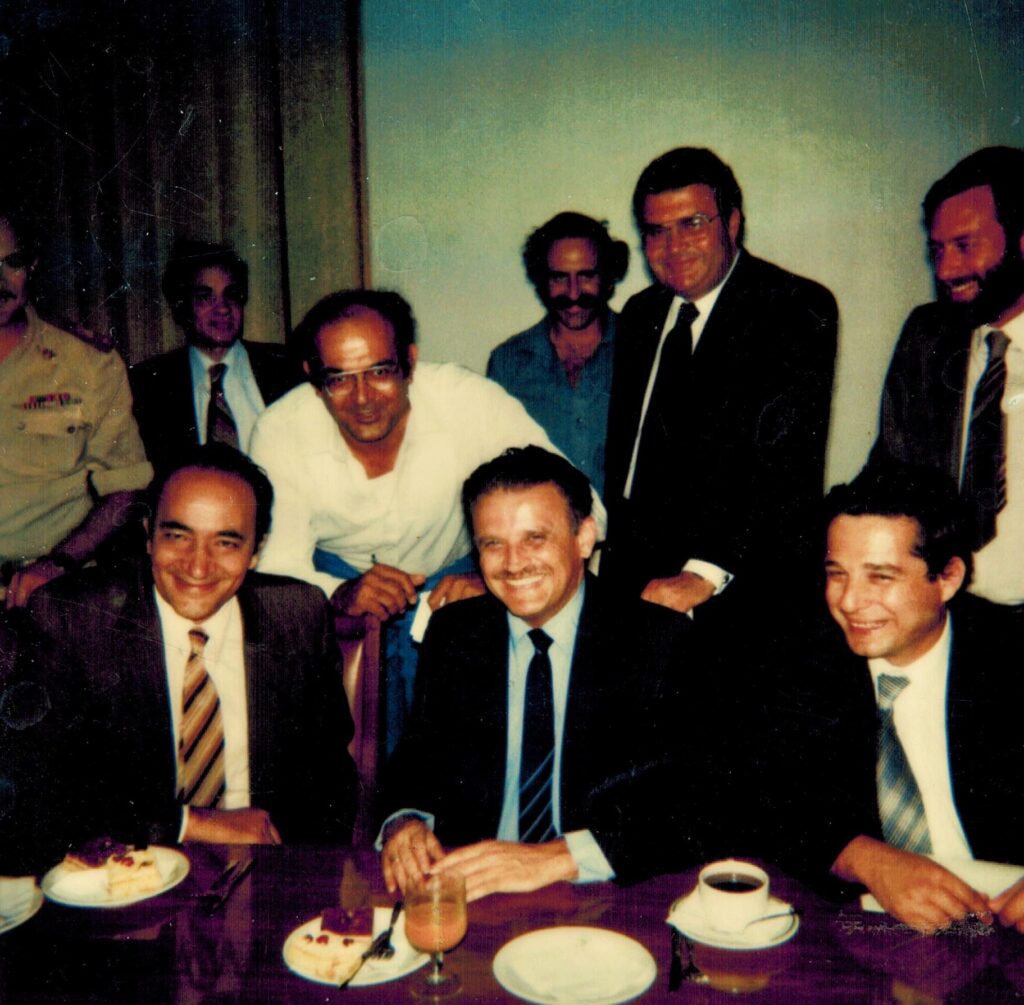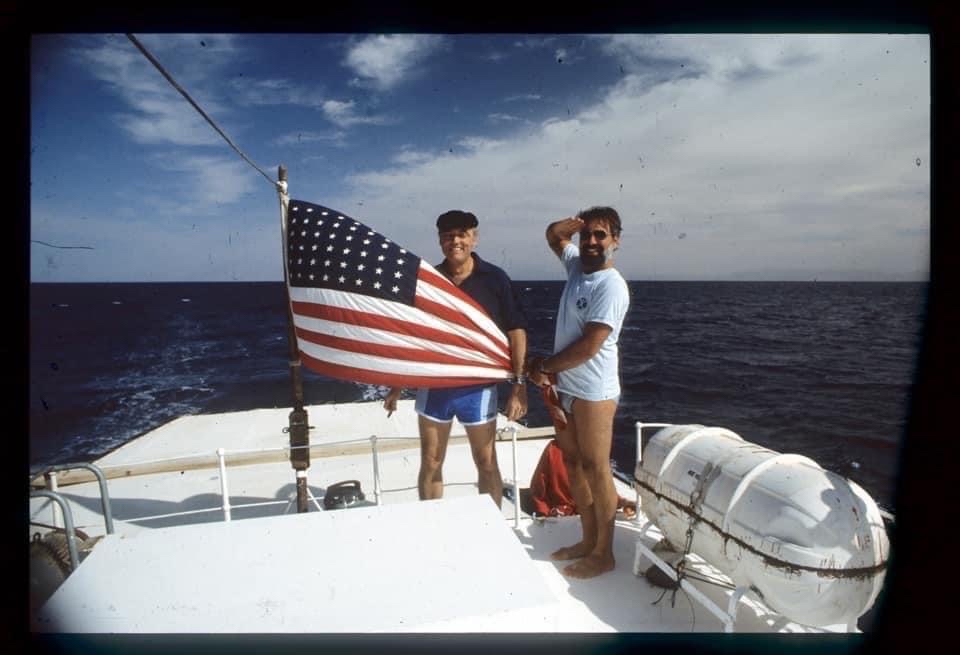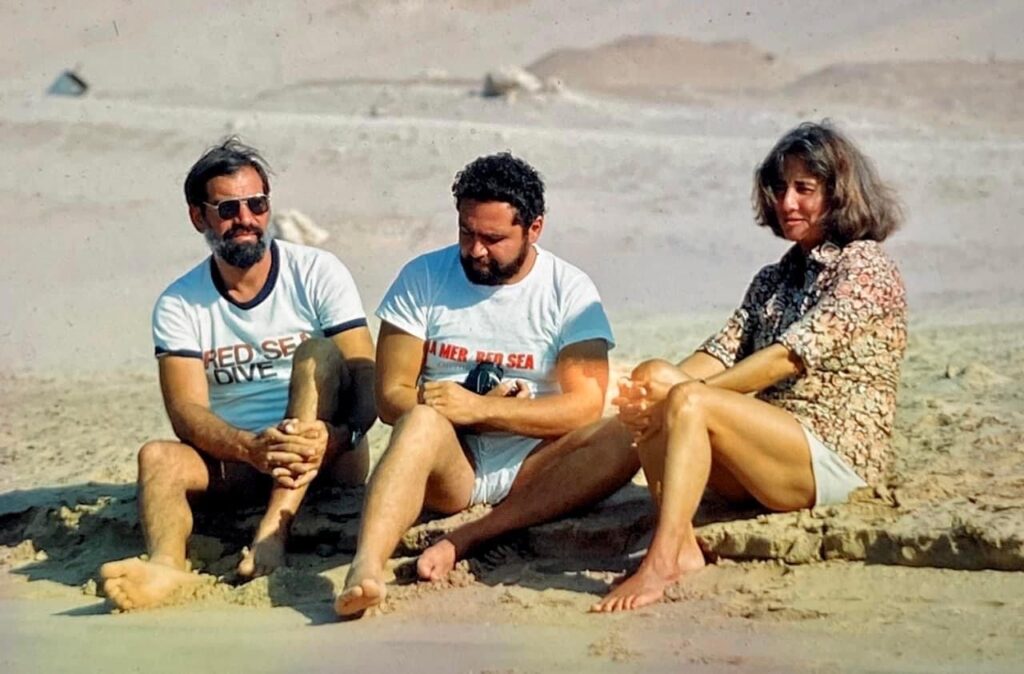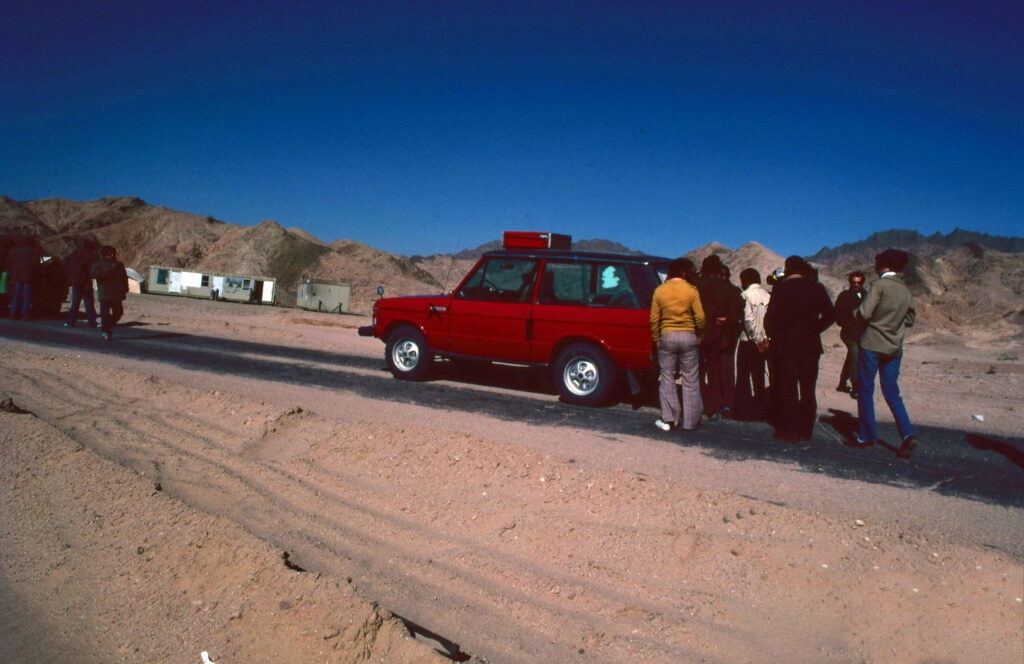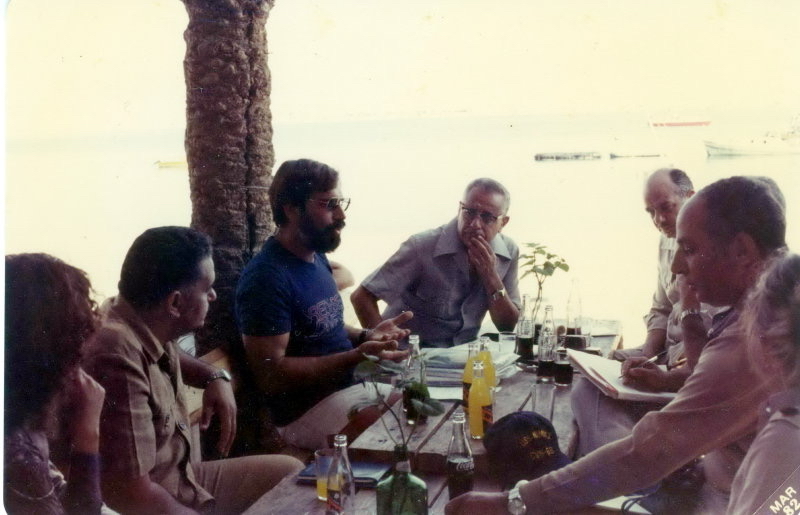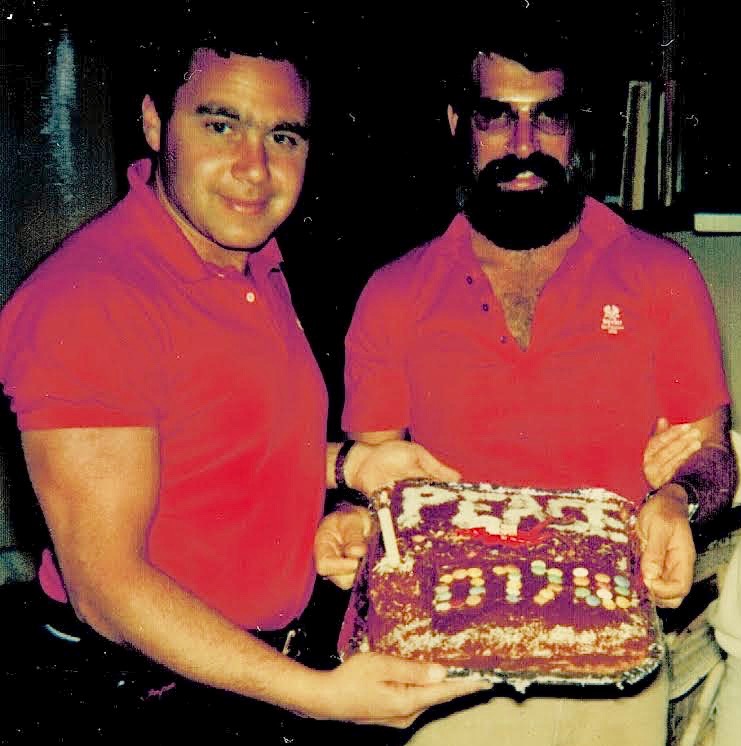In 1970, I was 23 and a new immigrant to Israel from America. My age and inexperience did not stop me opening one of the first diving schools in Israel – the Mediterranean Diving Centre at Sidna Ali Beach in Herzliya – a mere six months after gaining my basic scuba certification in my native California.
Further dive centres and schools followed along Israel’s Mediterranean shore at Jaffa and Caesarea.
Around the time I was starting operations the War of Attrition and fighting along the Suez Canal and the Sinai between Israel and Egypt was winding down. A ceasefire was in place but, with no formal peace treaty on the horizon, the Israeli government decided to establish several civilian settlements along the Red Sea coast south of Eilat. These were at Nuweiba, Dahab and Sharm el Sheikh.
Israeli government officials approached me about opening a branch of our operation in the recently opened Neviot village at the Nuweiba oasis. I and my partners Natan Vardi and Yitzhak Kastenbaum were eager to have a base in the Red Sea, so this was an offer we couldn’t refuse.
In 1972 I loaded equipment from our Mediterranean Diving Centre and headed south to the Red Sea to open the diving club. A collective settlement with plans for agriculture and a tourist village, Neviot was located in a beautiful, tranquil setting, perfect for our diving activities.
Conditions in the settlement were still very basic. Established by a group of Israelis in their 20s, the accommodation was simple but clean and comfortable. Our dive centre was a small hut at the edge of a beautiful beach.
We were already training hundreds of divers annually in Israel, but the inconsistent diving conditions on the Mediterranean coast presented a serious obstacle to carrying out the mandatory deep dives necessary for certification.
The new Red Sea base would be the solution for the final stages of the course, and the perfect venue to complement the Med centres. We also had plans to promote local and international diving tourism in the Sinai, in what was still the dawn of diving tourism throughout the world.
In March 1972 we managed to fill the resort village with divers and celebrate the start of Passover right where it all began. After the holiday, we organised groups to do the open water dives from the pristine beaches of the oasis, where the greatest danger was being run over by a roaming camel.
Diving conditions were perfect for our purposes, with shallow reefs ideal for snorkelling and scuba at entry level as well as more advanced training. With accommodation adjacent to the dive club, it was the perfect diving-holiday package.
We learnt as we worked – “on the dive”. There were no books or articles about how to run a dive club or school in such a remote place, and little was known about the diving in the area. We explored kilometres of coral reef, seeking the best sites and familiarising ourselves with the marine life.
In the autumn of 1972 the first group of overseas diving tourists arrived for a land-based safari from Eilat south along the Sinai coast all the way to Sharm el Sheikh and on to the southern tip of the Sinai shore at Ras Mohammed – the “jewel in the crown” of Red Sea diving.
The first American group of divers, from Bay Travel
After 10 days of diving, the American group leader told me he thought that the southern Sinai had the best diving in the world, and that it would be in our interests to move our activities to the Sharm area.
He knew what he was talking about, and was eager to bring more groups the following year. I followed his advice and transferred my activities to Sharm in early 1973.
1973: The move to Sharm
Sharm el Sheikh was the last stop on the new road heading south from Eilat. There were very few residents when we arrived, mostly military personnel serving at local bases. Bedouins had moved to the area in search of work, and there were several dozen Israelis working for the civil administration as well.
In the mix were a small group of ambitious entrepreneurs like myself, eager to start businesses in the area. The new settlement of Ofira was just starting to be built. Sharm was destined to become the tourist centre of the entire Sinai Red Sea coast.
Accommodation was terrible when we arrived, and another distinct problem was the region’s political and military instability. No one knew how long Israel would continue to control the Sinai, which was probably the main reason for the reluctance of the investors needed to build proper hotels or offer other tourism services.
There was the aptly named Moses Hotel in “downtown” Ofira but, from its appearance, Moses himself might have stayed there during the Exodus. A half-star rating would have been a kindness.
In nearby Na’ama Bay was the Caravan Motel, consisting of 30 small trailers still sitting on their wheels. These served as rooms but were ready to be towed back to Eilat when the area returned to Egyptian sovereignty.
The nearby Marina Sharm Motel had 30 glass-fibre geodesic bungalows. Nothing could have been less suitable or uglier for the desert environment.
We were given land on the beach in Na’ama Bay next to the Marina Sharm to set up our dive club. Our first structure was an old wooden railway freight wagon unceremoniously dumped on the beach. In that first year of operations our floor was beach sand.
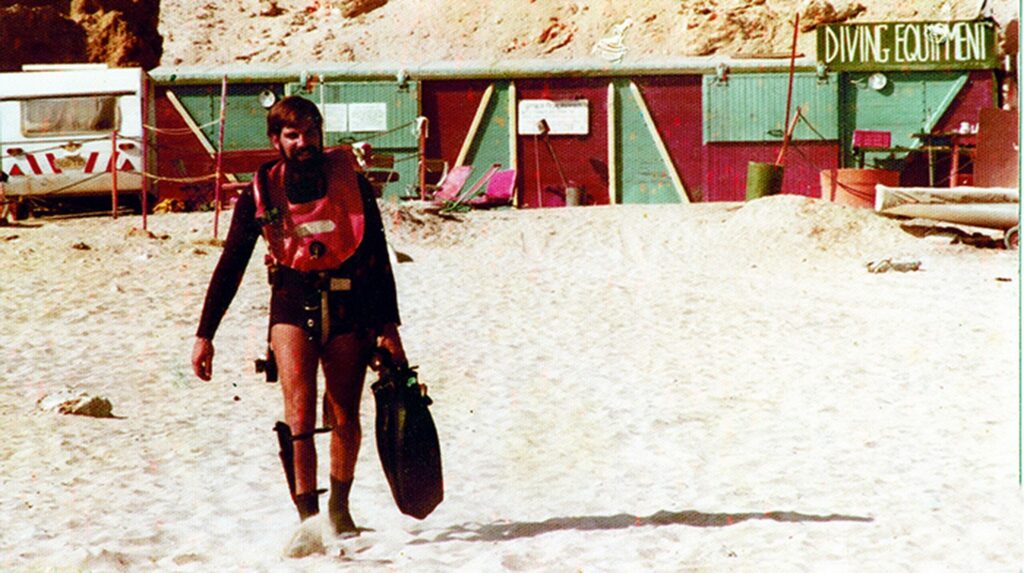
After several weeks of work the “Train Car” dive centre was just about ready for business, but we had one big problem – there was no electricity. Chutzpa kicked in again, and we “borrowed” electricity for the compressor by running a high-voltage power line from the motel’s generators 100m away, buried 20cm beneath the sand.
We bought an army-surplus 4×4, painting it orange in case it ever got stuck on some desert trail and needed to be easily spotted by an air-search team.
We used a skiff designed for 8-10 divers with their equipment. Affectionally called the “Golden Slipper”, it was basically a giant surfboard with an outboard engine. We were finally ready to go out and dive the beautiful coral reefs outside of Na’ama Bay.
At this point, the Israeli Navy informed us that diving activity had to be limited to Na’ama Bay itself. I thought this was a crazy order that would kill the business even before it started, and decided to ignore it. We would venture out of the bay and, if arrested, would just have to prove our case.
Next morning, we went out to one of the dive sites just outside the bay. A Navy patrol boat spotted us and ordered us to return to the bay. I responded in my still-elementary Hebrew that if the Israeli government wanted to develop diving tourism to Sharm, it would fail if divers were not allowed to explore the reefs of the entire area.
The skipper insisted that orders were orders and told us to return. I advised him that we would not and that they would have to arrest us. He called his commander in Sharm, and I assume that he wisely instructed him to allow us to continue with our diving for now.
That evening, I received a summons to the naval base, where I met the commander and senior staff as well as representatives of the Sinai’s civilian government in Sinai. I explained to this distinguished group that I had influential guests diving with me, testing the potential of diving tourism in the region.
If these “influencers” were satisfied with the area and the co-operation of local services, thousands of divers would come to Sharm – which was exactly what the Israeli government wanted, was it not?
The matter was moved to Jerusalem and, after a few days, the insane restriction was lifted and we were free to dive at any site along the Sinai coast. It was a huge victory for us, and for everyone who would follow us.
1973: The Yom Kippur War
After the Jewish New Year holiday, and just before Yom Kippur, I went north to see my wife Sharon. The next morning the Yom Kippur War broke out and I was unable to return to Sharm, which was already under Egyptian attack.
When I did finally return, I was worried about my neighbours who had been trapped in Sharm during the war and, of course, in what condition I would find my dive centre and equipment.
I was relieved to learn that there had been no injuries or deaths in the Sharm area. Juma, my faithful Bedouin worker, had handled the situation very responsibly.
The morning the war started, with Egyptian jets strafing the nearby army base, he had been brave enough to rush around the bay, collecting all the rental gear and tossing it into the dive centre before hightailing it to the mountains, where his parents lived.
We reunited months after the war, and it took close to a year for business to return to normal. The Yom Kippur War was a very painful one, with great loss of life on both sides, and a peace treaty between Egypt and Israel was still another six years away.
1974: The first National Geographic expedition
The year after the war, we guided and provided services to a team from the prestigious National Geographic magazine. They had come to write an article about the underwater life of the Red Sea, using our Sharm dive centre as their base.
When they arrived in the early autumn of 1974, they must have been shocked to see our primitive set-up – the old freight wagon with its one small compressor, a small boat and a temperamental orange army-surplus 4×4.
The team was led by Dr Eugenie Clark, known worldwide as the “Shark Lady”. Genie’s specialty was shark behaviour and she had written several books, including the best-selling Lady and the Sharks.
Also there were David and Anne Doubilet, underwater photographers on their first assignment for the magazine. If they were worried about placing all their expensive photo equipment on our small boat they hid their concerns, and we made sure that everything was lashed down securely.
Genie, David and Anne had come to study, dive and capture spectacular images of the Red Sea. Our operation learnt a great deal from them as well. Their story in the September 1975 issue was a huge success and yielded David Doubilet’s first cover image for National Geographic, launching a brilliant career that has spanned more than 50 years.
National Geographic’s September 1975 cover story
He gave me my first lessons in underwater photography – and a Nikonos II camera as a tip. Working with the Doubilets boosted my desire to photograph under water, and would eventually launch my career in underwater photography. We subsequently worked together on six further articles on the Red Sea and the Indian Ocean.
1975: Diving in a well
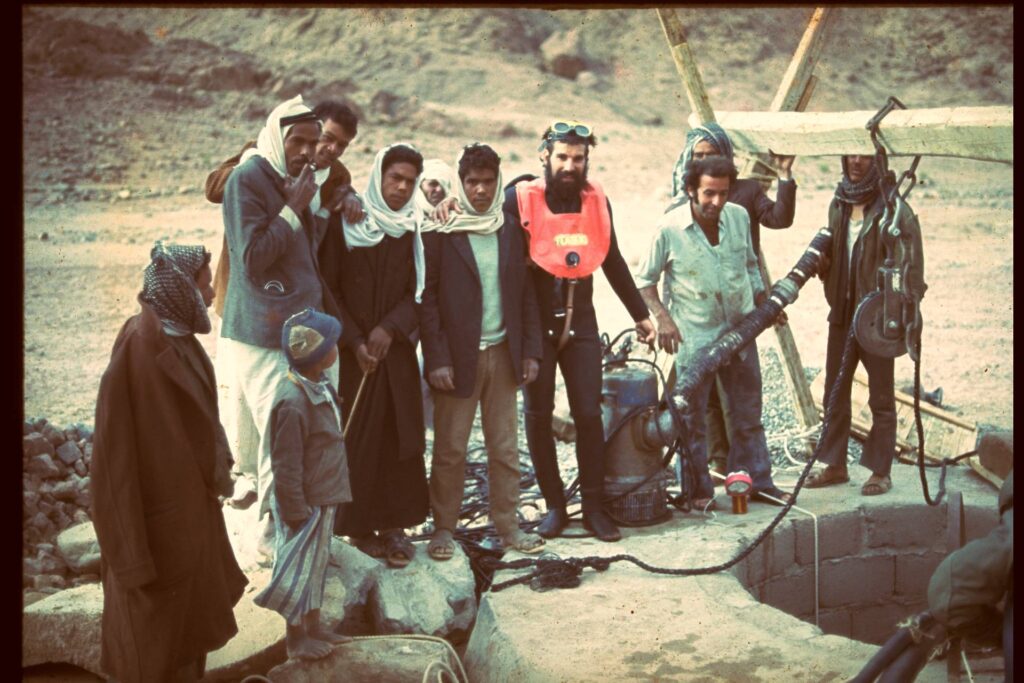
Diving at altitude – beside the well at St Catherine’s monastery
Shortly after the departure of the National Geographic team, the local authorities called me to say that they were looking for a volunteer diver to help them extract a water pump that had broken down inside an ancient well.
There were few professional divers available in 1975, so I volunteered to help. I was amazed to find that the well was outside St Catherine’s monastery, at the foot of Mount Sinai.
I gathered my dive-gear and was about to leave when I mentioned to a guest from Switzerland where I was going to dive. He shot back: “Just make sure you dive according to the high-altitude decompression tables.”
I had never heard of such a thing, and asked if he happened to have a copy with him. He smiled. “I came to dive in the Red Sea, not in the mountains,” he replied.
This adventure at an altitude of 1,500m was probably the most dangerous of my diving career. It was not a simple descent into the well, which was essentially a narrow, deep, dark hole in the ground, and I had no idea about the dangers involved.
I barely survived that dive, after getting stuck for a few heart-pounding minutes, but was finally able to free myself and the pump and help to bring it to the surface.
I was relieved – but also aware that on that occasion I had taken on a challenging task for which I was untrained and unready.
1976: Upgrading the vision
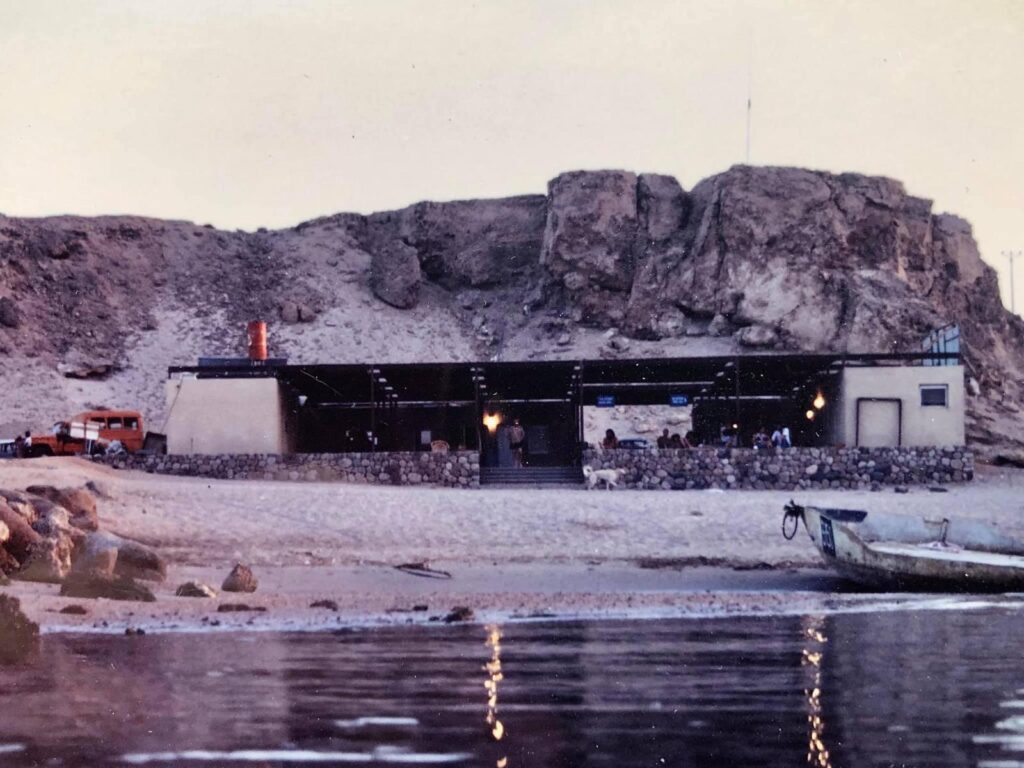
Wanting to expand our activities, I brought in two new partners – Yossi Kvashni, an experienced ex-Navy SEAL officer and Michael Daniel, a Tel Aviv businessman.
We gave our company a new name, Red Sea Divers, and undertook a serious expansion programme, including building a spacious diving and watersports centre right next to the Train Car.
We bought 100 new aluminium diving cylinders, an enormous new compressor and dive boats suitable for our increasing activities. I felt a great sense of pride and accomplishment seeing the new dive centre become a reality.
Special friends
Working in the diving business in such a beautiful location allowed me to meet a lot of interesting people and to form lifelong friendships. At the top of the list were Samuel W Lewis, the US ambassador to Israel from 1977-1985, and maestro Leonard Bernstein.
Sam was in Israel during turbulent yet historic times, encompassing the entire peace process. A true peacemaker, he played a key role in establishing peace between Israel and Egypt.
Shortly after Sam had taken up his new post in Israel I was invited to teach him to dive, in the residence pool. Once certified, he came down to Sharm to dive with us at every opportunity. This continued throughout his time as ambassador and for years afterwards. Our friendship would last for 40 years.
By the mid-1970s, business was picking up. After one day of diving I came back to the dive-centre and checked the daily rental forms that my Bedouin employee Mahmoud had been organising.
On the topmost form was a familiar name. One Leonard Bernstein from New York had rented a mask, snorkel and a pair of fins. Could this be the same famous composer and conductor I had watched on TV every week when I was growing up in LA, giving his famous children’s concerts? The man behind West Side Story and On The Town?
I went to the hotel reception next door, and the receptionist’s description of the guest certainly matched the images I had in my mind. I took a chance and put a note in his key-box, inviting him to dive as my guest the next day.
He showed up next morning, eager to dive and somewhat experienced, having previously dived in the Caribbean. He came aboard our dive-boat and had what he described as “the time of his life”. Approachable and friendly, he liked being in the cobalt-blue water, snorkelling and diving or just hanging out with our crew and guests.
After this, every time he visited Israel for a concert or other event he would always take a few days off to hang out with us at Red Sea Divers. It was an escape from the crowds and his frenetic lifestyle and schedule. For just a few days he would become Lenny, one of the gang and so much fun to have around.
In 1981 Israel was preparing to leave the Sinai and return it to Egypt as part of the Camp David Accords worked out between President Carter, President Sadat and Prime Minister Menachem Begin. By chance, Lenny was back with us in Sharm following a concert in Tel Aviv, and we also had a National Geographic team staying.
Unexpectedly the authorities advised us that all guests had to evacuate the area, because Sadat and Begin had decided to hold a summit meeting in Sharm. That was bad news for us, for obvious reasons, so I appealed to Begin’s military adviser and, to my surprise, was given special permission for both Lenny and the magazine team to stay on. The former’s name always carried a lot of weight in Israel!
During the week of preparation for the summit, our dive centre became the hub for the hundreds of American and European media teams covering it. This was when Sharm was still a sleepy little town with 2.5 motels, three restaurants, three dive centres and little else.
PM Begin of Israel and President Sadat of Egypt at their momentous meeting in Sharm
Nothing much was happening unless you were really into scuba-diving, and hearing that an American (me) was running diving operations attracted ABC, NBC and CBS to come over to get some local colour. When they saw Lenny having lunch in our little restaurant, they went ballistic. He was a much better story than me!
They asked me for ideas of stories they could pursue while waiting for Begin and Sadat to show up. Anxious to retain their attention, and perhaps win some publicity and income for our struggling business, I told them of reports that just south of Sharm, at a place called Ras Mohammed, Israeli and Egyptian fisherman were anchoring at night to fish side by side for the first time ever.
This was almost revolutionary for anyone privy to the historical antagonism, if not outright hatred and violence, between Israelis and Egyptians before this peace process.
The ABC anchor chartered our best dive boat to go out to film that night, and Lenny immediately insisted that he should come along as well. The ABC crew loved the idea, and the deal was struck.
Hearing of our plans, David and Anne Doubilet asked if they could come too – having ABC News and National Geographic on our boat was the ultimate “wet dream” for us.
My only problem was figuring out how to sneak into an area that was off-limits to tourist boats like ours. Israeli fishermen had special permits not available to us. I decided to avoid the navy by heading north toward Tiran Island, before looping south-east and then west to reach the fishing spot west of Ras Mohammed.
Things were a little tense on the boat, because we couldn’t run any navigation lights and it was a dark night with no moonlight.
Luckily, our radar picked up the dots just off the coast that showed that the fishing-boats were in place. The camera crews got their gear ready – we had no clue what was about to transpire.
We steered the dive boat right at the largest cluster of fishing boats, moving in total darkness. Lenny was loving every minute of it. About 50m from the boats, I allowed the film-crew to put on their very powerful lights.
Combined with our boat’s spotlight we lit up the entire sea, exposing tens of small fishing boats and a few larger Egyptian boats down from Suez. This was the first time since the Six Day War in 1967 that they had been able to access these bountiful waters.
We freaked the fishermen out. They surely thought we were the Israeli Navy arriving on a raid. Cameras running, we pulled up to the stern of the largest Egyptian fishing boat. Arabic music was blaring from a portable cassette tape and fish innards and bait were strewn everywhere, as big men dressed in jellabiyas went about their highly scented work.
I had told everyone not to think about boarding the boat until one of the Arabic-speaking members of our crew could ask permission, so you can imagine how surprised – and worried – I was when Lenny suddenly jumped from the bow onto the slippery back deck to mingle with the Egyptian fishermen.
I quickly jumped over the railing to join him but, before I could reach him, he was engaged in a debka dance with the biggest, swarthiest fisherman there.
The scene was beyond surreal. The fisherman was nearly twice Lenny’s size and the two of them were like whirling Dervishes moving to the Arabic melodies.
After five minutes of this the fisherman, who obviously had no clue that his dance partner was one of the world’s most famous musicians and artists, picked him up and gave him a kiss on the cheek!
By now our boat was tied off onto the fishing boat, and the TV and magazine crews were filming and clicking away.
This bizarre scene at remote Ras Mohammed will stay with me and all who witnessed it forever. Lenny had the time of his life, and I still remember his beaming face on the long, dark ride back to port!
1979: Jolanda
As part of Israel’s gradual withdrawal, in 1979 the Sinai was split almost down the middle from north to south. To the north was the El Arish oasis on the Mediterranean coast. To the south the temporary border ended at Ras Mohammed, the southernmost tip of the Sinai.
The Ras, as we called it, was one of the most famous and best dive-sites in the Red Sea. That temporary borderline left the very best diving there just out of reach, and we were forbidden by the Egyptians to dive there.
This ban on diving in Ras Mohammed was a severe setback. I shared the problem with Sam and, with his active intervention, that problem was solved. Ras Mohammed was once again available to our guests.
Adventures were not lacking at that time. As soon as Ras Mohammed was reopened for diving, a cargo ship named Jolanda ran aground on Shark Reef there. As it began to sink it caused extensive damage to the dive-site.
The stricken Jolanda and salvage vessel Montaigne at Shark ReefAnchor-chain of the Jolanda lying on the reef
To make matters worse, a Swedish salvage ship, the Montaigne, anchored on the reef nearby to begin a salvage operation, causing further severe damage to the fragile coral ecosystem. It was an acute ecological disaster.
I went to the site, photographed the damage caused by both ships and returned to the dive centre to report to the Israeli authorities. We were able to mobilise enough support, including from the US embassy in Cairo, to close the salvage operation. So not only did we make efforts to keep Ras Mohammed open to divers but we were able to minimise damage to it and preserve it as a dive site.
1979: Dunraven
The Dunraven was one of our more colourful and famous adventures – the discovery of a mysterious sunken ship at the time of mingled tensions and hopes leading up to the peace agreement.
In our six years of diving tourism in the Red Sea we had been unable to offer guests a wreck-diving experience. The popularity of the idea of diving sunken ships stemmed partly from the popular 1977 adventure film The Deep with Nick Nolte, Jacqueline Bisset and Robert Shaw.
The film had already contributed to a spike in Caribbean diving tourism, a fact not lost on us. So our crew at Red Sea Divers, along with talented colleague and graphic artist Shlomo Cohen, cooked up a real “shipwreck fantasy”.
We had concocted a story about a mysterious treasure – a ship carrying gold bars to pay the Bedouin fighters who had joined Lawrence of Arabia in the battles between the British and the Ottoman Turks. The only problem was that in our part of the Red Sea we had failed to locate a single submerged ship. We needed a shipwreck, and fast.
A chance meeting with Bedouin fishermen provided the vital lead
Bedouin fishermen mentioned during a chance meeting at sea that in the Gulf of Suez, about an hour’s cruise from Ras Mohammed, was what they thought was a sunken ship. One told us that it was a site someway off the Sinai coast with many fish, and that with the mid-day sun overhead in a calm sea it was possible to make out a large and unusual dark area at the base of the reef.
We asked for an exact location but the best we got was: “After turning the corner at Ras Mohammed head into the Suez Gulf on a westerly bearing, smoke two cigarettes and, in the distance, you will see waves breaking on a reef (Sha’ab Mahmoud). Go to the south-western end. Off the reef, and below you, is the site believed to be a sunken ship.”
We were sceptical, but what did we have to lose, other than time and fuel? At worst it would be an interesting day’s exploration of a new coral-reef area.
Next day we set out, turned the corner at Ras Mohammed, and I asked one of the staff for two cigarettes. Amazingly, after smoking the second one I scanned the horizon and noticed waves breaking on a coral reef far off the shore.
Spotting the Dunraven site
I quickly organised a dive at Sha’ab Mahmoud and, as soon as I hit the water, I saw a large, inverted ship lying on the bottom, covered with schools of large and small fish. Eureka! We had our sunken ship.
A year after this first dive, a BBC crew came to shoot the documentary Mystery of the Red Sea Wreck, about the ship and its history.
1979: First visit to Egypt
The peace treaty between Egypt and Israel was signed in 1979. It was the first time an Arab state had signed such an agreement with Israel, and included a staged Israeli withdrawal from the Sinai, so we had only the three years until April 1982 to operate our dive centre in Sharm. What would happen after that?
One of our clients, a businessman from South Africa, had contacts in the Egyptian tourism industry and suggested that we fly together to meet them in Cairo and discuss options for future co-operation.
There were no direct flights from Israel to Egypt then, and Israeli citizens were not even allowed to enter the country. Using my American passport, I flew from Tel Aviv to Athens before connecting to Cairo to meet my friend. He had scheduled two days of meetings with potential partners and government officials, including ministers.
It was exciting and bizarre to be in Cairo after years of bloodshed, among the first Israelis to enjoy, as I hoped, the fruits of the peace process. Our meetings went well and I found a lot of interest about the Sinai among the Egyptians I met, especially about the potential for international tourism.
Soon after that private visit, I was invited to be part of an official delegation to Cairo, accompanying Israel’s tourism minister for bilateral negotiations with his Egyptian counterpart as an expert in diving tourism.
I proposed that I should prepare a slide presentation and, to my delight, both ministers agreed. I wanted to emphasise two points: first, that diving tourism could be the backbone of a lucrative industry in Sinai under Egyptian rule and, second, that the Sinai ecosystem above and below the water needed to be well protected and preserved.
I would stress that the Israeli government enforced strict environmental laws against damage to coral reefs, including fishing in areas designated for tourism, a total ban on collecting shells or corals, and a ban on discharging pollutants into the Red Sea or coastal areas.
I was looking for an opening sentence to grab the attention of the non-diving participants, and came up with this: “Tourists will pay a lot of money to dive with sharks…”
In my presentation, I covered Sinai’s beautiful mountainous region, St Catherine’s monastery, the Red Sea shores, the coral reefs, the world of diving and why the Red Sea was considered one of the world’s top diving destinations. Judging by the applause and all the questions, it was a success.
Israeli and Egyptian tourism ministers meet in Cairo
Egyptian Ministry of Tourism officials asked to meet me the next morning at my hotel to discuss the possibility of my continuing to run the dive centre after the Israeli withdrawal. I was the only Israeli operator to receive such an offer, and it was quite an honour.
I do believe that being an American citizen was a factor. I have the contract to this day and considered the proposition, but ultimately decided that Israel was my home and where Sharon and I wanted to raise our children. I respectfully declined.
1981: First dives at Abu Nuhas
The period leading up to the evacuation was a difficult time for all Israeli residents of the Sinai. I still had a desire to continue diving activities in the Red Sea, hoping that the peace agreement would allow us to visit and dive along its shores on both sides of the Gulf of Suez and south to the Sudanese border.
There were hundreds of kilometres of pristine reef yet to be dived and explored, and I wanted to have a headstart.
Towards the end of 1981, an opportunity arose. The skipper of one of our chartered dive-boats flying an American flag suggested that we “sneak” out of Sharm to the Egyptian side. We both held US passports, so thought that once beyond the jurisdiction of the Israeli Navy we could dive and explore the Egyptian coast as American tourists on a yacht with a US flag.
One evening we headed south into international waters before changing course west towards Shadwan Island. With great excitement, we planned to explore the reefs of the uninhabited island but, approaching its eastern side, it was clear that sea conditions were not good for diving.
As soon as we reached the north-eastern side, however, we found shelter near two stranded ships stuck on Abu Nuhas, a reef just east of the island.
Abu Nuhas reef is a cemetery for sunken ships – at least four that we could determine. We carried out several dives on the Carnatic until sea conditions worsened and we had to run for shelter.
We found a safe anchorage precisely where, several years before, the Egyptians had operated one of Russia’s most sophisticated radar stations. During the War of Attrition, an Israeli commando raid had dismantled and transferred it to Israel.
1982: Time to leave
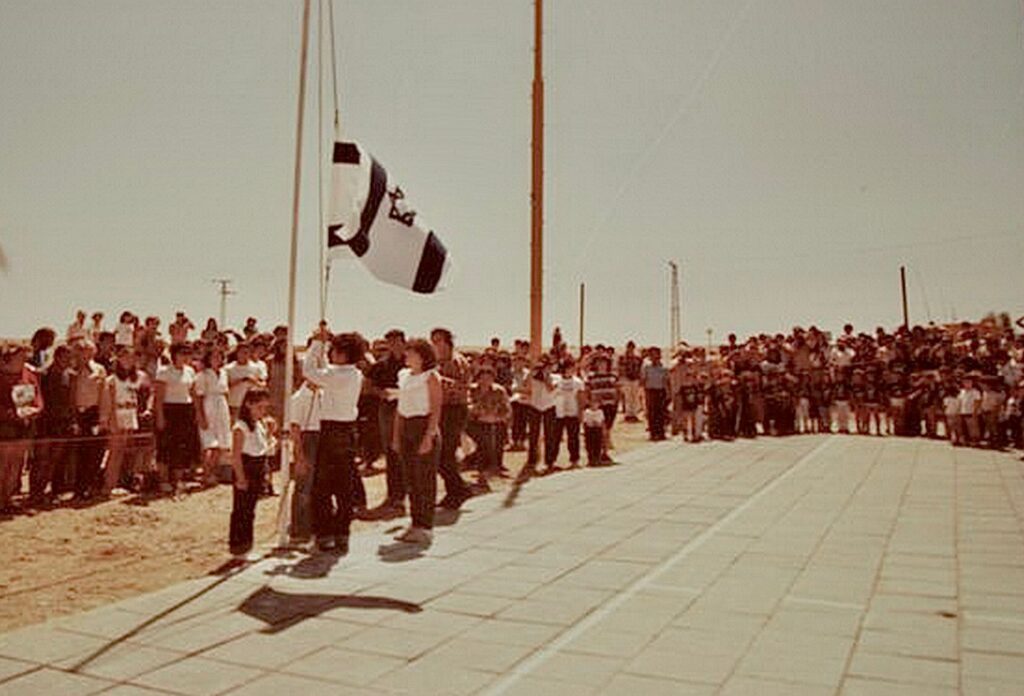
The date of Israel’s withdrawal from Sinai in April 1982 was approaching. The Egyptians set up a government company to purchase all of Israel’s tourism infrastructure, including our Red Sea Divers centre. On the Israeli side, a military committee negotiated the sale of the properties.
The Egyptians didn’t haggle much – it seemed that they just wanted us out as soon as possible, without long-winded negotiations on prices.
We left the Sinai in April 1982 with our heads held high. I supported the peace process, did everything I could to make it a success, and the agreement has lasted more than 40 years. It severely affected my personal and professional life, but our family left Sinai with a sense of accomplishment and pride.
A handful of hard-working Israeli entrepreneurs, supported by the Israeli government, had managed to convert an eternal battlefield where conflict had prevailed from time immemorial to an internationally respected and sought-after international tourism destination.
Groups and individual travellers had arrived from all over the world. Articles were published in leading magazines and magnificent films produced about diving the Red Sea – all of which were a great source of pride that I carry to this day. We were truly an integral part of the historical process.
Of no less importance, we co-operated to produce laws that would enforce the protection of the unique beauty above and below the water in this remarkable place.
A year after the withdrawal, I was back in the dive-travel business in the Red Sea with Fantasea Cruises, a company I formed after we left Sharm, with our two liveaboard diving yachts Fantasea 1 and Fantasea 2. We finally ceased all Red Sea diving operations in 1997 – 25 years after it all began!
Special thanks to Divernet for the original article.

